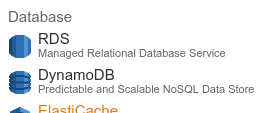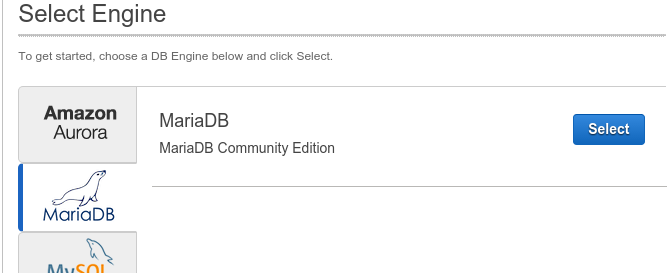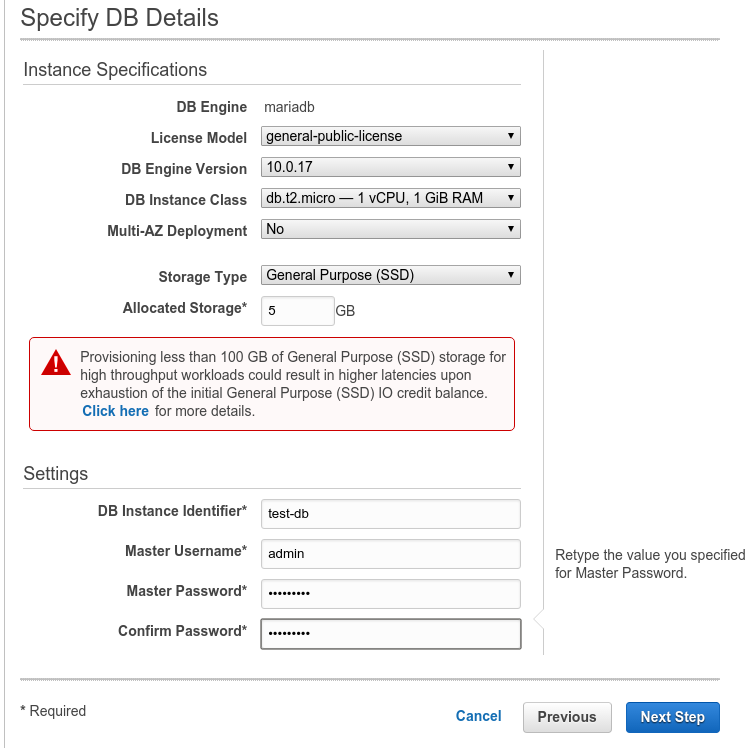MariaDB on Amazon AWS
MariaDB is available on Amazon AWS through MariaDB SkySQL, as one of the database options when using Amazon's RDS service, or using a MariaDB AMI on Amazon EC2 from the AWS Marketplace.
MariaDB SkySQL
Cloud database service is available through MariaDB SkySQL on Amazon AWS. MariaDB SkySQL delivers MariaDB with enterprise features for mission-critical workloads. Support is provided directly by MariaDB. Refer to SkySQL Documentation for complete details. Get started to launch a MariaDB database on AWS in minutes.
Amazon RDS
To get started with MariaDB on Amazon's RDS service, click on the RDS link in the Database section of the AWS console.
Next, click on the Get Started Now button. Alternatively, you can click on the Launch DB Instance button from the Instances section of the RDS Dashboard.
In either case, you will be brought to the page where you can select the database engine you want to use. Click on the MariaDB logo and then click on the Select button.
You will then move to step 2 where you choose whether or not you want to use your MariaDB instance for production or non-production usage. Amazon has links on this page to documentation on the various options.
After selecting the choice you want you will move to step 3 where you specify the details for your database, including setting up an admin user in the database.
You will then move to step 4 where you can configure advanced settings, including security settings, various options, backup settings, maintenance defaults, and so on.
Refer to Amazon's RDS documentation for complete documentation on all the various settings and for information on connecting to and using your RDS MariaDB instances.
AMI on EC2
MariaDB AMIs (Amazon Machine Images) are available in the AWS Marketplace. These AMIs, kept up-to-date with the most recently released versions of MariaDB, are a great way to try out the newest MariaDB versions before they make it to RDS and/or to use MariaDB in a more traditional server environment.




